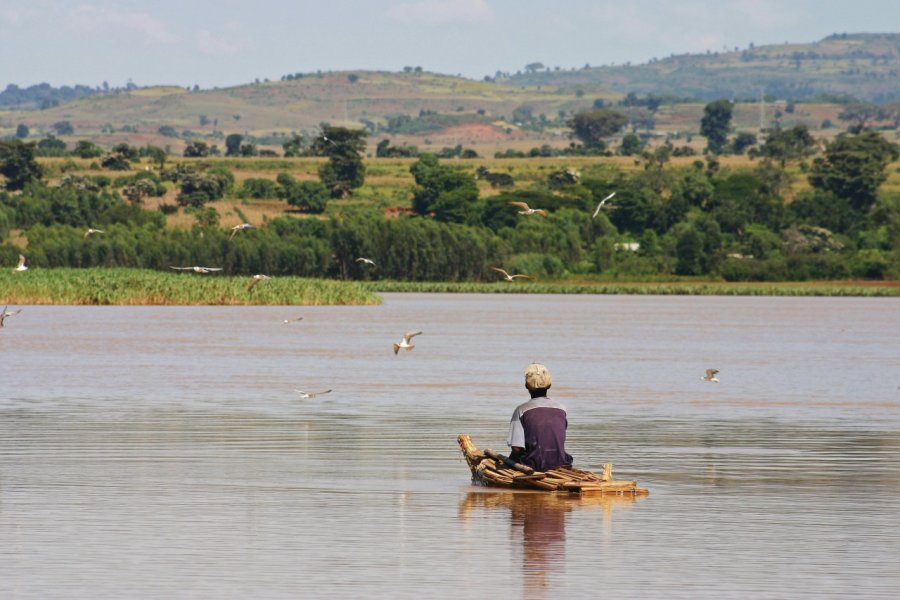Travel Guide Lac Tana
Find an accommodation
Advertising
Ethiopia's largest body of water is a veritable inland sea covering some 3,500 km2. Unlike the Rift Valley lakes in the south of the country, it was not formed as a crater or fault, but by a depression formed by the uplift of the Simien mountains to the north, the Guna to the east and the Choke to the south, all over 4,000 m high. As a result, the lake is shallow (around 9 m), making it vulnerable to global warming.Its thirty-seven islands, where monks withdrew from the world as early as the 4th century, are home to some twenty churches and monasteries, most of which were built in the 14th century under the reign of Amda Tsion, and a few under the Gondaran dynasty in the 18th century (notably during the reign of Nerga Selassie).From the Bahar Dar jetty, you can choose a full-day or half-day trip (in this case, the Zegue peninsula only) to visit between three and five churches, and catch a glimpse of hippos, pelicans and birds of all kinds, as well as fishermen on tankwas. We really advise you to opt for the full day, as the churches on the Zegue peninsula are not the most impressive, but it would be a shame to come all the way here and miss out on the jewels of Lake Tana! Remember to buy a picnic lunch and plenty of bottled water before you leave, as there's absolutely nothing to eat on the islands.
What to visit Lac Tana?
Suggested addresses Lac Tana
Weather at the moment
Advertising
Organize your trip with our partners Lac Tana
Transportation
Book your plane tickets
Car Rental
Boat rental
Accommodation & stays
Find a hotel
Holiday rental
Find your campsite
Tailor-made trip
Immersion travel
Services / On site
Activities & visits
Find a doctor










